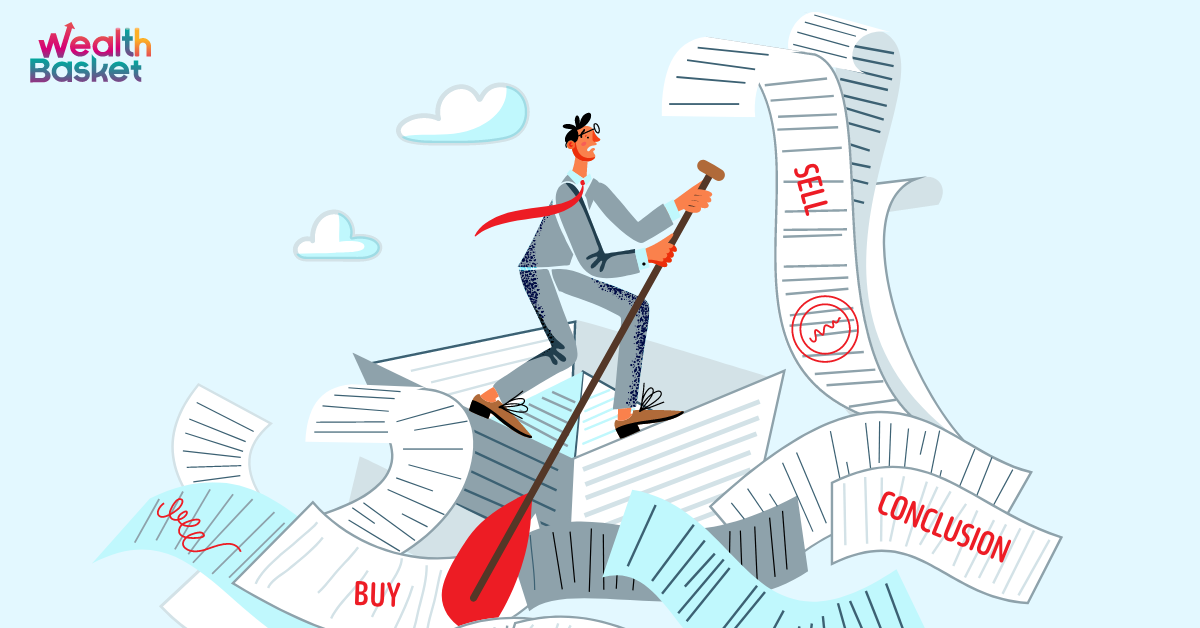“Practice makes perfect” is a timeless adage that applies to various aspects of life, including investing. Before experimenting with the world of trading with real money, gaining experience and knowledge becomes important. This is where paper trading comes into play.
In this blog post, we will explore the concept of paper trading, its numerous advantages and disadvantages, and how it differs from live trading.
What is paper trading and how it works?
Paper trading, also known as virtual trading or simulated trading, is when trading strategies are practiced without using real money. In this method, a simulated trading platform is used, either through paper trading websites or apps, that clones the live market conditions. Investors can place buy and sell orders, track their trading portfolio, and analyse the outcomes, all in a risk-free virtual environment.
Why do Investors Paper Trade?
Investors engage in paper trading for several reasons. Here are a few:
Learning and Education
Investors use paper trading to gain constructive experience and practice trading concepts without risking real money.
Testing Strategies
Virtual trading allows investors to experiment with different trading strategies and work on them based on outcomes.
Building Confidence
Investors gain confidence in their decision-making abilities while trading stocks, when they experiment with virtual trading.
Understanding Market Dynamics
Paper trading helps traders observe and comprehend market movements, trends, and volatility in a simulated environment.
Risk Management
Virtual trading enables investors to fine-tune their risk management techniques without financial consequences, therefore enhancing their ability to minimize potential losses.
Paper Trading vs Live Trading
While paper trading and live trading share similarities, there are notable differences between the two. It’s important for investors to understand these distinctions in order to make informed decisions about which trading approach should they follow.
| Paper Trading | Live Trading | |
| Definition | Simulated trading without real money involved. | Trading with real money at stake. |
| Financial Risk | No financial risk. | Since real money is at risk, potentially resulting in gains or losses. |
| Emotional Impact | Limited emotional impact. | Emotions play a significant role and can impact decision-making. Fear, greed, and anxiety can influence trading decisions. |
| Market Realism | Simulated market conditions imitate real market movements but may have execution differences. | Trades executed in real-time with actual market conditions, including price fluctuations and liquidity. |
| Learning and Experience | Provides a risk-free environment to learn and gain experience. | Offers hands-on experience with real money, allowing for a deeper understanding of the market dynamics and emotional aspects of trading. |
| Impact of Trading Decisions | Trading decisions may not have significant consequences on the investor’s overall financial situation. | Trading decisions directly impact the investor’s financial gains or losses. |
Advantages and Disadvantages of Paper Trading
Paper trading has a whole lot of various advantages and disadvantages that influence the decisions of investors on whether they should paper trade or not.
Advantages
Risk-free practice
Paper trading provides a risk-free environment to test strategies and observe one’s mistakes without any financial consequences.
Skill development
It helps investors sharpen their trading skills, gain experience, and understand market dynamics before venturing into live trading.
Strategy refinement
Paper trading allows investors to optimize their trading strategies by learning from their mistakes and analyzing the performance of trades executed in the simulated environment.
Disadvantages
Lack of emotional involvement
Since paper trading doesn’t involve real money, the emotional impact of trading decisions may be different from live trading. This can result in different results between live trades and virtual trades by the investor.
Execution differences
While paper trading platforms strive to replicate real market conditions, there may be variations in execution speed and liquidity, which can affect trade outcomes.
Overconfidence
Excessive reliance on paper trading without transitioning to live trading may lead to overconfidence and unrealistic expectations. This can cause huge losses for traders.
Conclusion
Paper trading is a valuable tool for investors to gain experience, test strategies, and refine their skills without risking real money. It provides a risk-free environment to learn the intricacies of the market and build confidence. However, it’s important to recognize the limitations of paper trading and eventually transition to live trading to experience the emotional and financial aspects of the market.
FAQs
Paper trading is a method of practicing trading strategies without using real money. It involves using a virtual trading platform to place virtual buy and sell orders.
Paper trading does not involve real money, so you cannot make actual profits. However, it helps you gain experience and refine your strategies before venturing into live trading.
Yes, paper trading is highly beneficial for beginners. It allows them to learn and practice trading strategies in a risk-free environment, gaining confidence and experience before entering the live market.
Paper trading is risk-free in terms of financial consequences since no real money is involved. However, it’s important to remember that the market dynamics in live trading may differ, and emotional involvement plays a role in decision-making.















